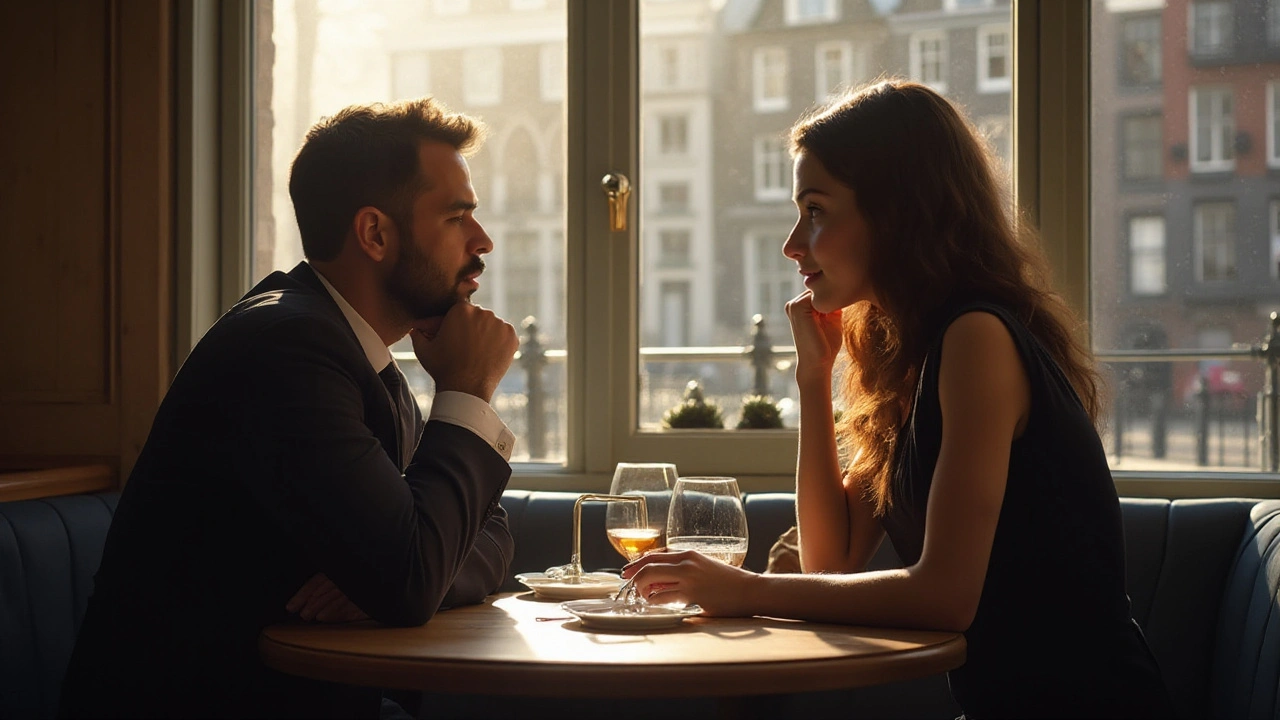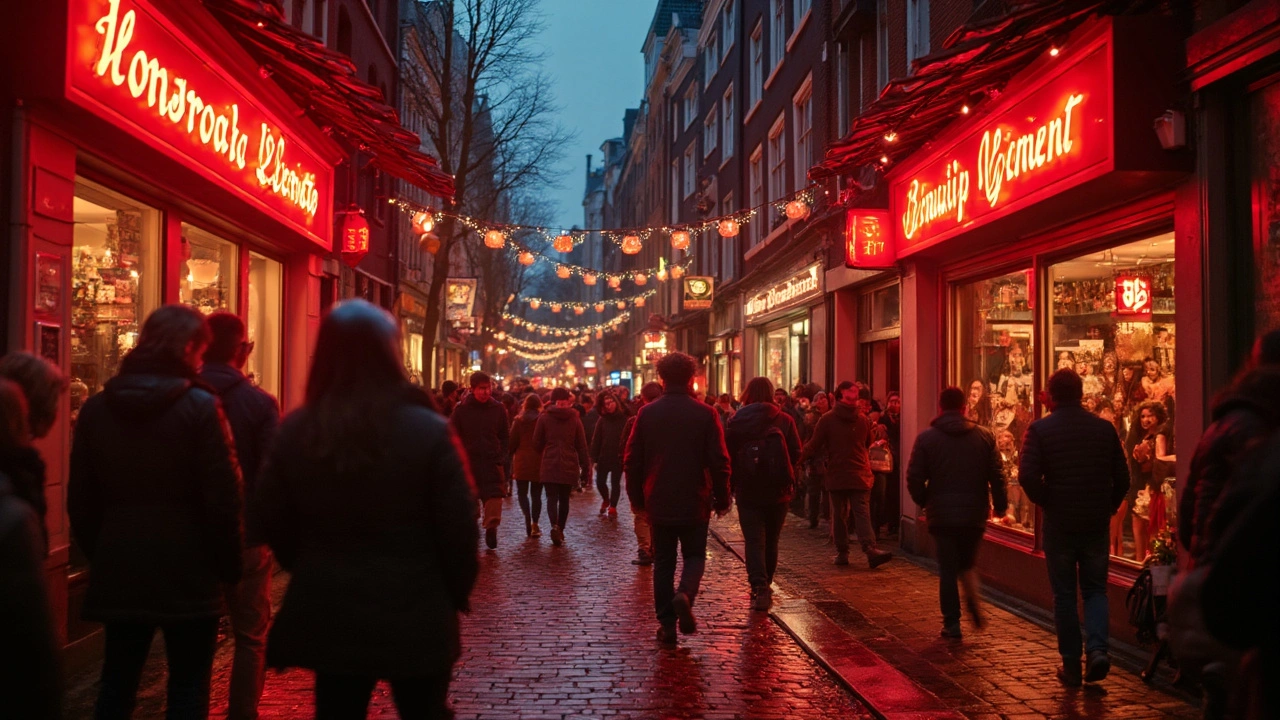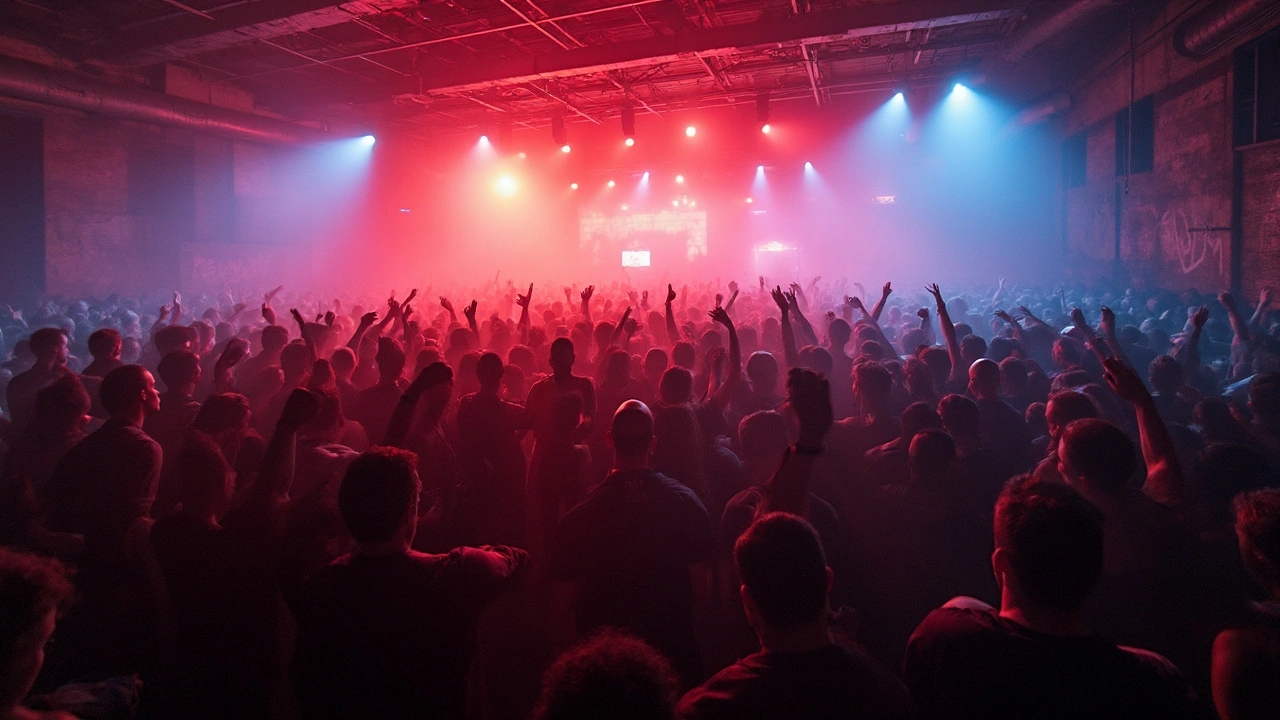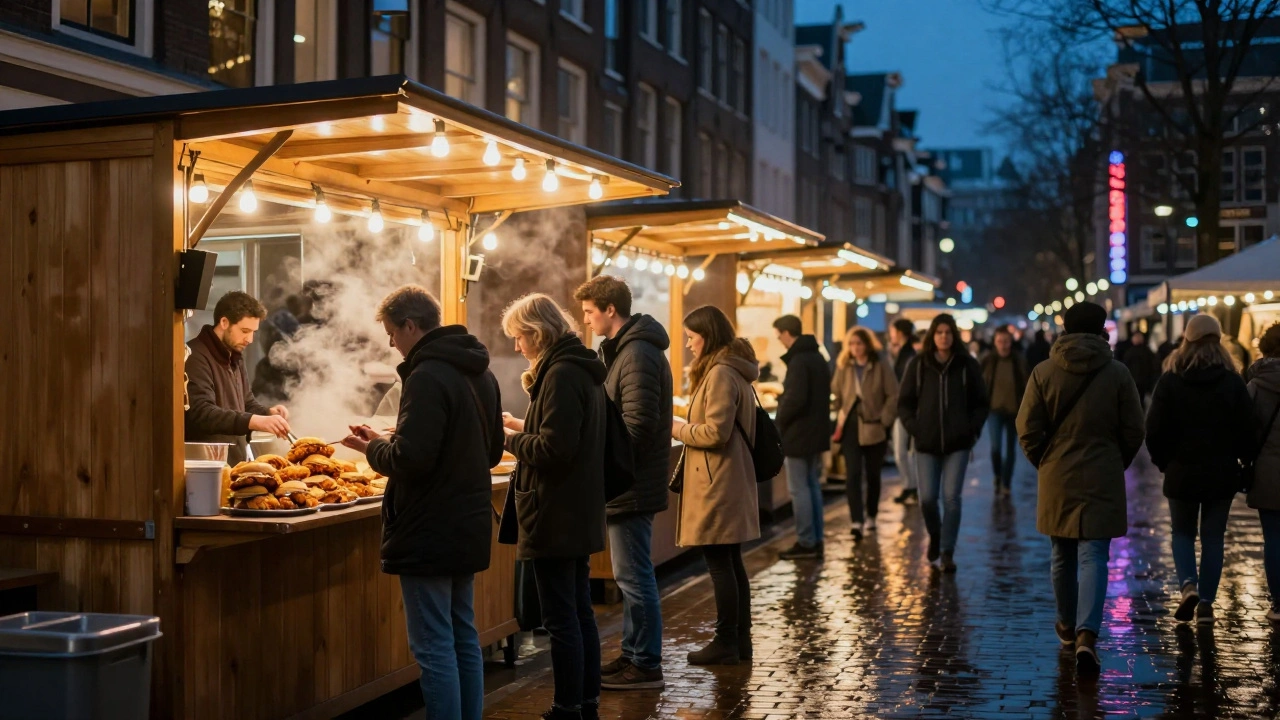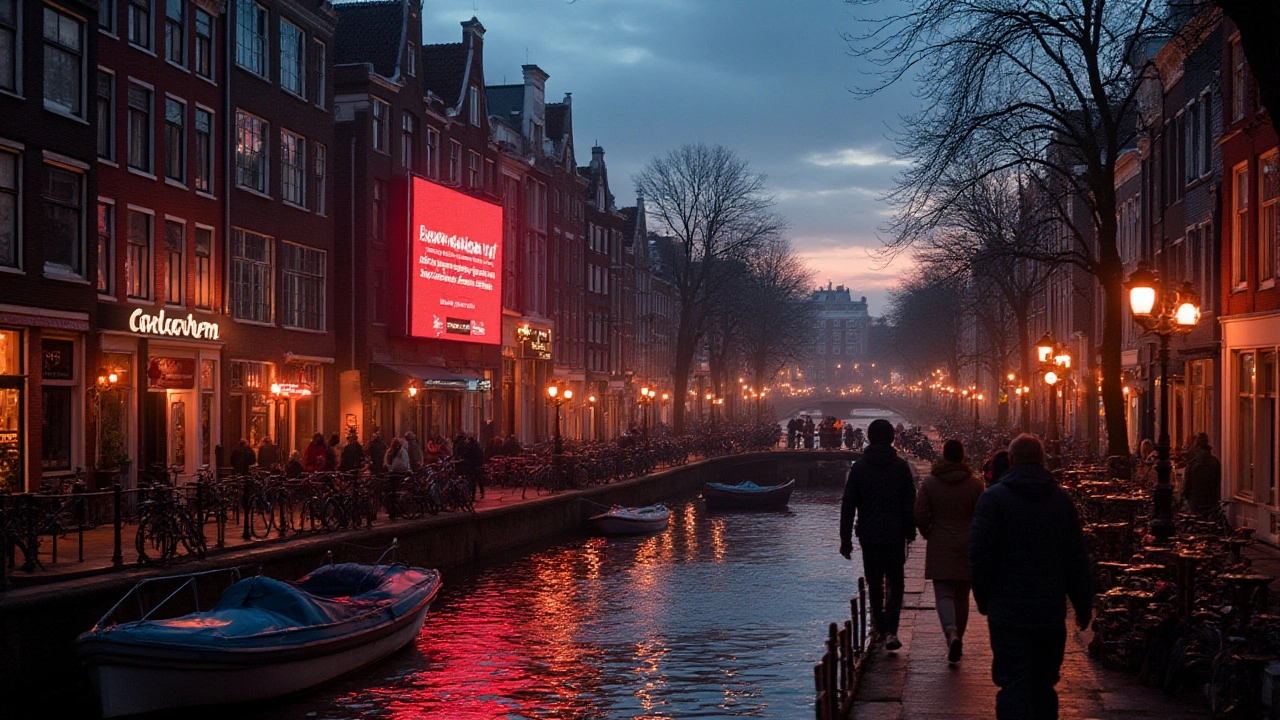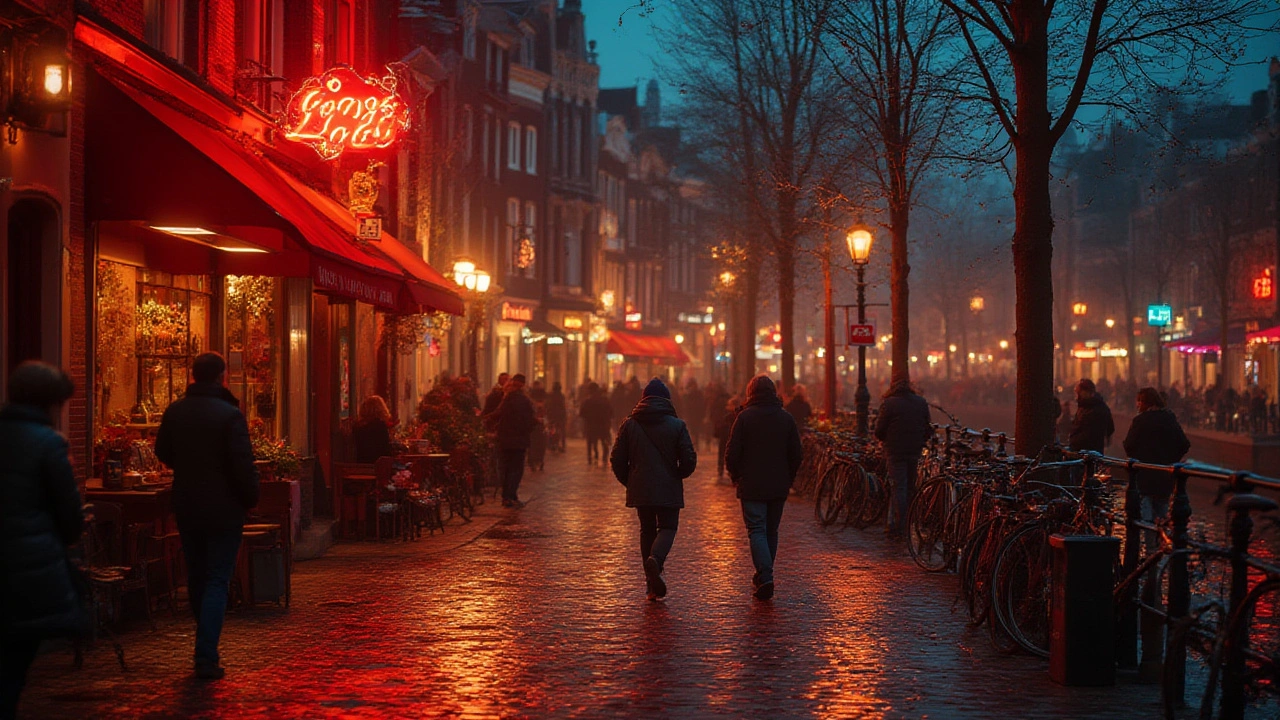
Amsterdam’s Red Light District isn’t just a neon-lit fever dream from backpacker legends. The heart of De Wallen pulses with everything that makes Amsterdam wild, weird, and unforgettable. Under those rosy lights? It’s not just the sex workers in windows. There’s a maze of cobbled alleys, hidden courtyards, smoky coffee shops, and historic bars. The best news? You don’t need much cash to feel the real vibe here. You can soak in the sights, sounds, and oddball spirit—even if your wallet is barely thicker than a tram ticket. The thing is, most folks imagine everything in the Red Light District costs a small fortune, but the area is actually packed with free attractions, budget food stops, and experiences you’ll remember way longer than a quick peep show.
Budget-Friendly Ways to Explore De Wallen
Let’s break a myth right off the bat: You don’t need to empty your pockets to get the most out of De Wallen. Walking around the district itself is free—and worth it. The famous Oudekerksplein (Old Church Square) cuts straight through the wild part of the district; it’s one of the oldest parts of Amsterdam. By day it’s a jumble of city noises, with street musicians, open-air food stalls, and that constant ripple of bikes breezing past.
A practical tip? Skip the official guided tours during the day and opt for one of the many “pay-what-you-want” walking tours that cover the Red Light District. Companies like FreeDam Tours or SANDEMANs offer deep dives into Red Light history, told by hilarious local guides who know all the secret anecdotes. You hear the real stories of the sex work industry, get tips on safety, and laugh at all the wild tales that rarely make it onto any official signboard.
Amsterdam Red Light District streets are a circus of interesting distractions. Want to get a peek into the sex industry—without having to fork out for the museum? Walk past the narrow alleys during the early evening (6–9 pm) when the neon signs buzz but the crowds aren’t overwhelming. Respect the workers—no photos—and you’ll still get the classic street view experience. And don’t forget about free events: every year in August, the Grachtenfestival spills out into hidden courtyards and canals all across the city, and some performances take place right on the De Wallen canals.
If you’re in town on a weekday, hit up The TonTon Club—a gaming bar tucked behind Oudezijds Achterburgwal. Come during happy hour, grab a cheap local beer (try an IJwit from Brouwerij ’t IJ), and battle your friends on old-school pinball or air hockey for a couple of euros. It’s the most laid-back way to soak up the local nightlife vibe without breaking the bank.
Between all this, make time to duck into hidden corners most tourists miss. The Bethanienstraat area, for example, is full of indie coffee shops and divey snack bars. When the munchies hit, skip the tourist traps and hit Febo for an “automatiek” croquette—fresh, hot, cheesy, and so Dutch you’ll want to take a photo before every bite.
Unique Sights and Hidden History—Without Paying for Tickets
De Wallen is a living, breathing bit of Amsterdam’s past. You’ll find the city’s oldest building, the Oude Kerk (Old Church), surrounded by crimson-lit windows. While the church itself charges a few euros for entry, the exterior is a masterpiece of Gothic architecture and free to admire. The peace in the maze-like Red Light streets just before noon is unreal—Venetian canals skirt the foot of the church, and there’s almost always a busker playing something haunting under the brick archways.
Everyone talks about the raucous nightlife, but do you know about the street art hidden in plain sight? The Red Light District is a gallery if you just slow down: murals pop up behind most alley corners, and there are secret bronze sculptures, like the “Belle” statue near the Oude Kerk, dedicated to sex workers worldwide. Set up in 2007, it’s a local symbol of respect and caught the attention of press everywhere.
For a wild bit of trivia, look for “De Stoof” — an authentic historic brothel preserved just as it was in the 19th century. While there’s a fee to enter the Red Light Secrets Museum, you can catch many fun tidbits just reading the plaques and peering through the frosted windows. Even better, the canal bridges themselves are a history lesson: those tiny “Amsterdammertjes” posts lining the streets? They were originally meant to stop horse carts from tumbling into the canals.
The Chinatown area (just steps from De Wallen’s neon), is another underrated gem. Here, you can grab the cheapest and tastiest bowl of noodles at Nam Kee, where students line up late into the night. The Buddhist temple (Fo Guang Shan He Hua Temple) is impossible to miss with its ornate facade—you can peak inside most days for free. The mix of Dutch history and Asian culture is classic Amsterdam weirdness that you won’t get in the guidebooks.
| Free Attractions | Typical Cost | Best Time to Visit |
|---|---|---|
| Red Light District Walking Tour (self-guided) | €0 | Late morning / Early evening |
| Street Art Spotting | €0 | Anytime |
| Canal Walks | €0 | Sunset |
| Chinatown Temple Visit | €0 | Daytime |
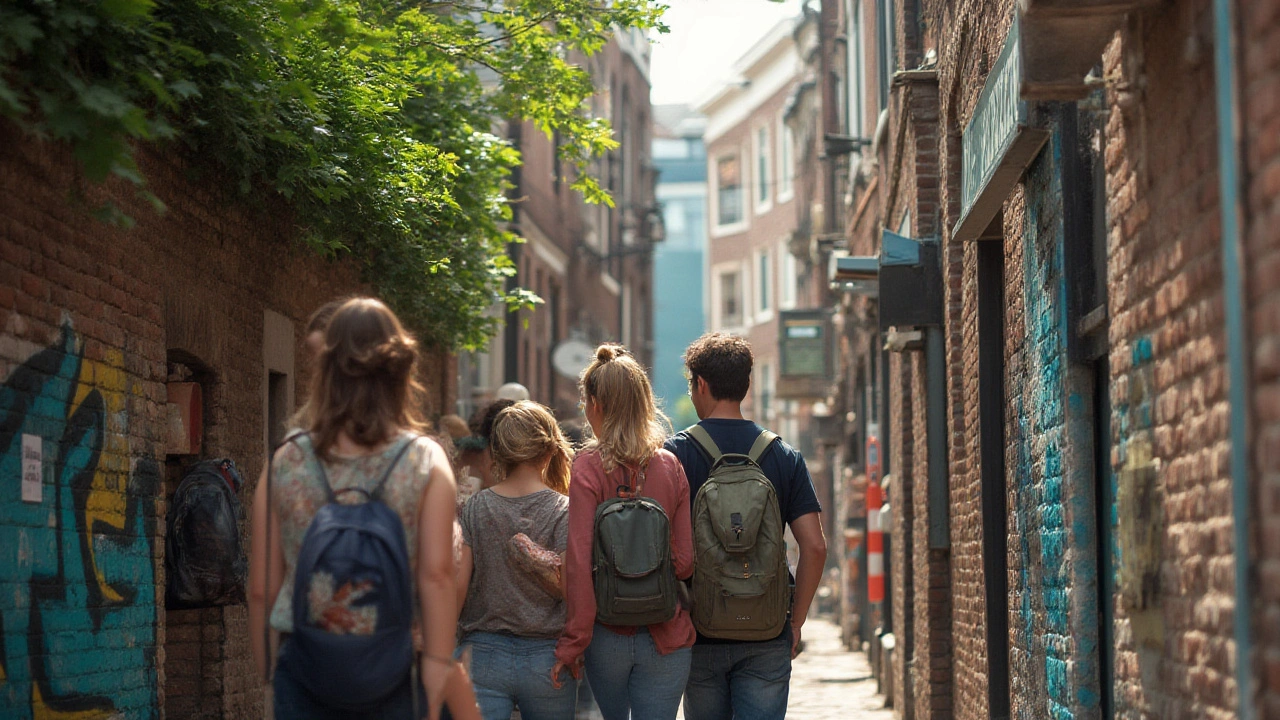
Cheap Eats, Quirky Bars, and Authentic Dutch Snacks
No one wants to explore all day on an empty stomach, but Amsterdam city center is infamous for tourist traps with sky-high prices. Good news: there are still hidden gems around De Wallen if you know where to look. The street food scene here is hands-down one of the best ways to experience Amsterdam culture on the cheap.
First stop: Vlaams Friteshuis Vleminckx is the Dutch king of fries. A cone of hot chips with traditional Dutch mayo or satay sauce will set you back less than €4, and there’s always a crowd. If you want classic Dutch, pop into a local “broodje haring” (herring sandwich) stand. It’s salty, a little weird, but oh-so Dutch, and costs less than a pint at any bar. Don’t knock it till you try it—that briny fish with onions is practically a rite of passage for first-timers.
Your drink budget doesn’t need to turn tragic, either. Local student bars like Cafe Belgique serve local Dutch craft beer on tap without the price tag you find on the tourist square. If you want to soak in authentic brown bar culture, check out Cafe de Dokter—the smallest bar in Amsterdam. Crammed with antique clocks and candles, it’s the real deal and hidden just off the main Red Light drag.
Okay, midnight hunger pangs? Amsterdam is famous for FEBO vending machine snacks. Slide in your euro, and out pops a piping hot kroket or bitterballen. Touristy? Maybe, but locals love it late at night. For sweets, buy a stroopwafel from a bakery or market stall, still warm and dripping caramel—it’ll barely cost you €2.
If you need a longer rest, the Damrak area just west of De Wallen is full of cheap sandwich shops (try a “belegde broodje” filled with fresh Dutch cheese and pickles) and Turkish döner counters. Or pile into Zeedijk Street for affordable ramen, Vietnamese banh mi, and traditional Surinamese roti—a nod to Amsterdam’s global flavor.
Events, Nightlife, and Alternatives to “Window Shopping”
Most tourists hit Amsterdam expecting to just wander the Red Light streets and gape at the windows—but there’s way more weirdness and fun packed into these blocks. Nightlife goes beyond what you see on the postcards. If you want to keep things legal and budget-friendly, try local bars with free live jazz (Cafe Alto or Bourbon Street), or check out the schedule at CC Muziekcafé—tickets for gigs run as low as €5 or less, and open mic nights are often free.
The Stoofsteeg is the go-to street for quirky comedy and indie shows. The Boom Chicago theater in Leidseplein often hosts late-night improv; locals swear their “shot and a sketch” tickets are hilarious and sometimes dirt cheap at the door. If your idea of a party is a bit more “laid back Amsterdam” than rave, most coffeeshops like De Tweede Kamer or Siberië are all about chill atmosphere, local music, and friendly budtenders happy to explain the menu (and the laws—don’t smoke on the street!).
De Wallen also hosts tons of small art pop-ups and craft markets in its many hidden courtyards—especially during weekends and special holidays like King’s Day in late April. You’ll find secondhand book markets, zine swaps, and local artists selling sketches of the district so you can score a real souvenir without spending big.
Want something truly unique? The Friday Night Skate is a locals’ secret—grab some cheap rental skates from a shop in the city center and join dozens of skaters winding their way through oddball corners of Amsterdam, including parts of the Red Light District, with a police escort. Totally free, and the best way to meet locals and see the city like a true Amsterdammer.
“Amsterdam is a city built for wandering, and De Wallen shows every color of the Dutch rainbow—if you keep your eyes open and your wallet in your pocket, you’ll find magic that isn’t on the maps.” – Rick Steves, European travel guide author
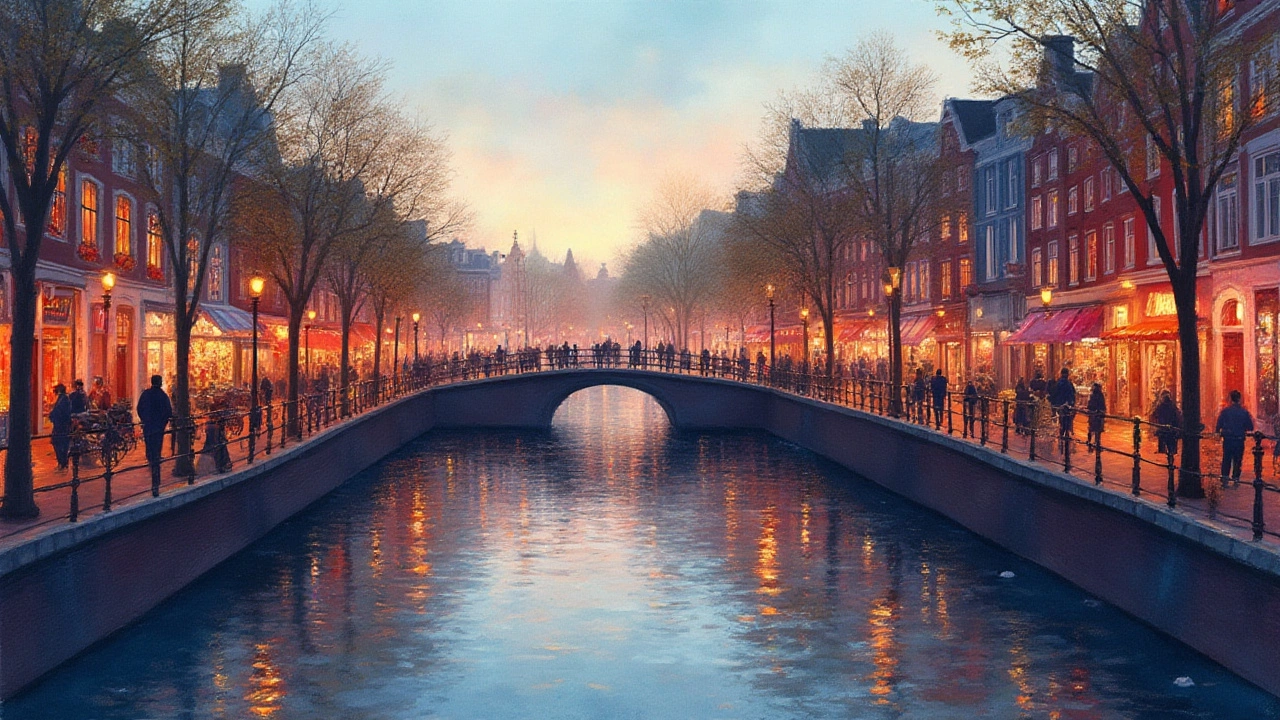
Savvy Traveler’s Guide: Safety, Etiquette, and Cultural Do’s and Don’ts
There’s a big difference between being a cool, respectful tourist in the Red Light District and being that guy everyone secretly rolls their eyes at. Yes, the area is open and famously tolerant, but there are unspoken rules. Never, ever take photos of workers in windows—this isn’t just rude, it’ll get you in trouble fast. The city has stepped up patrols, and fines can be steep. Amsterdam’s liberal doesn’t mean lawless.
There’s plenty of police presence, especially after dark, so you’ll usually feel safe, even in the smallest alleys. Just keep your wallet somewhere secure and watch out for pickpockets, especially near crowded bridges and bars. Most locals and staff speak English, so don’t be afraid to ask for help or directions—it’s a city of tourists, and most people expect oddball questions.
On weekends, the crowds get wild, especially around Warmoesstraat and Oudezijds Achterburgwal. A great tip for a less chaotic visit? Come on a Tuesday or Wednesday night, when the district is alive but you can actually walk the canals without dodging bachelor parties every five seconds.
If you visit a coffeeshop, don’t mess around with joints stronger than you’re used to—Dutch weed packs a punch, and too many tourists end up embarrassing themselves (or worse, in the canal). Ask the staff what’s “mild” or “for beginners,” and pace yourself. Just remember, no drinking alcohol on the street—it’s against local law and police do check for it.
Treat the Red Light District like any other vibrant neighborhood, with real people living, working, and hanging out. Say hi to staff, smile, and show some manners; you’ll often get helpful tips you won’t find in any travel blog. If you’re ever unsure if a bar or coffeeshop is tourist-focused or local, just look for the ratio of Dutch to English conversation. Dive bars packed with locals are usually less flashy, have cheaper drinks, and much better stories.
Bottom line? You don’t have to be loaded—or reckless—to experience De Wallen’s wild and funky spirit. With a little insider knowledge, you’ll walk away with real stories and barely dent your wallet. That’s the Amsterdam deal everyone envies.

